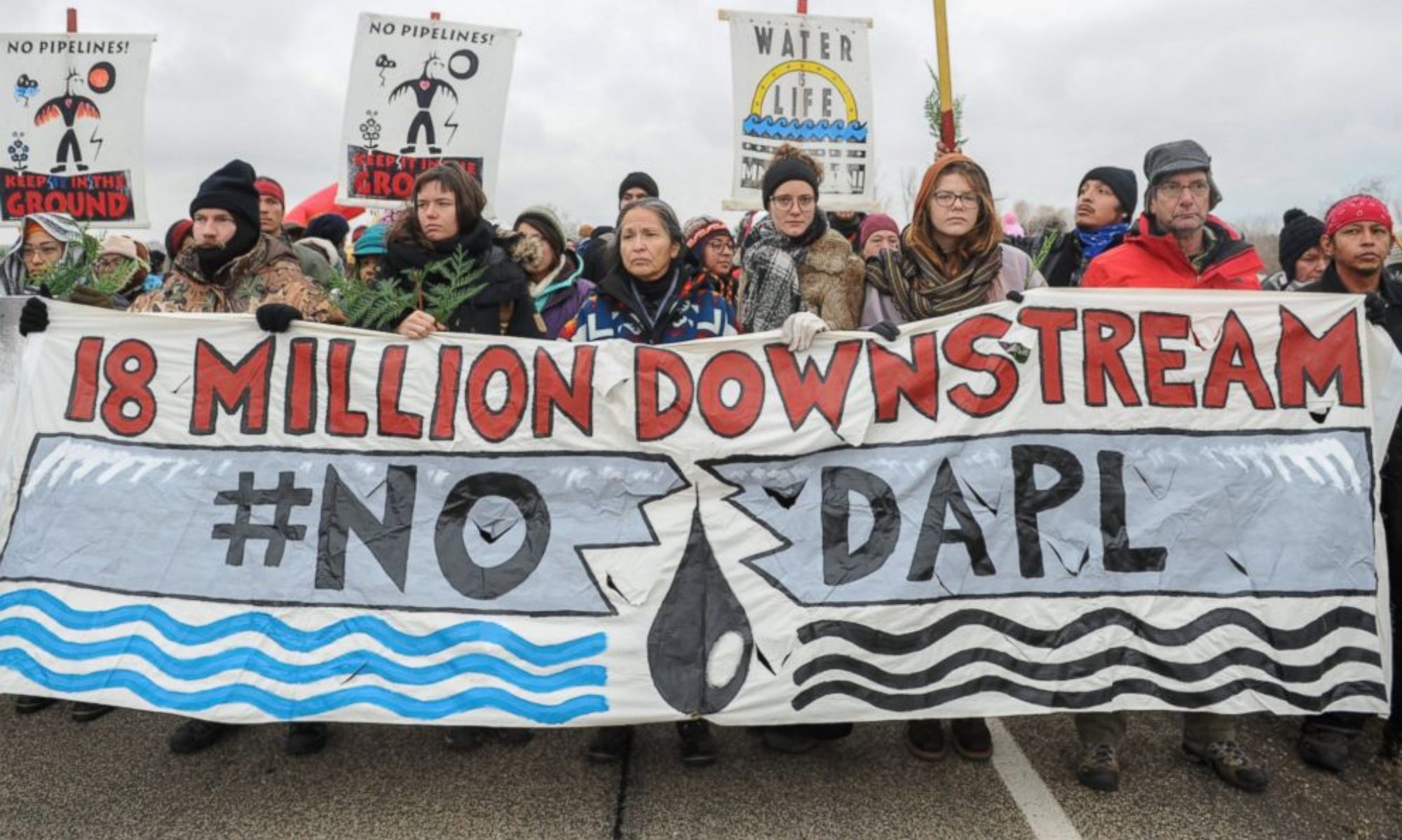The $3.78 billion Dakota Access Pipeline, halted by the Obama administration and then approved by the Trump administration, is a 1,172-mile long oil pipeline that runs underground. It begins in an oil field in North Dakota and travels southeast to an oil tank farm in Illinois. There has been tremendous controversy over construction of the pipeline because of the environmental dangers posed by the pipeline for people living near its path and because construction of the pipeline itself is in violation of indigenous sovereignty.
Over the past year, the controversy has gained a great deal of attention as the Standing Rock Sioux tribe and other activists have engaged the public through very effective social media and media outreach campaigns, as well as in physical protests. Activists have shared stories and started the social media #NoDAPL movement. In the fall of 2016, the #NoDAPL protesters were able to temporarily halt construction and get the ball moving on progress towards stopping the pipeline project. Sadly, when the new presidential administration in the US entered the White House, the fears of the Standing Rock Sioux tribe came true; the Trump administration authorized continued construction and the pipeline will soon be fully functional.
However, the protests movements and civic discourse surrounding the pipeline have not faded away. Instead, the movement has evolved into a call for people, cities, and companies to divest from the big banks that support the pipeline, removing investor financial support of the project. Collectively, the #NoDAPL and #DefundDAPL protests have led to a widespread understanding of the extent to which the rights of the Standing Rock Sioux and the safety of their community has been violated in the interest of corporate greed. It is now more important than ever that people act and contact their legislators and the banks backing DAPL to encourage them to divest, whether through pressure campaigns and rallies held at the banks, or even by removing their personal bank accounts.
Proponents of the pipeline construction argue that it is safe and will bring economic benefits and jobs to the states involved. Devashree Saha, a senior researcher on clean energy at the Brookings Institute, presents a balanced consideration of the arguments for and against the pipeline construction. She points out that “North Dakota’s Bakken shale one of the largest oil developments in the United States in recent history” (Saha) and that many of the pipeline supporters believe that pipelines are safer than transporting crude oil by train or by truck (Saha). At the same time, she presents information from a 2013 study by the International Energy Agency, which finds that “U.S. pipelines spilled three times as much crude oil as trains from 2004 to 2012. Even though pipeline accidents happen less frequently than train accidents—a fact that some people use to argue that transporting oil by pipeline is safer than rail—they can be larger and more difficult to clean up” (Saha). Supporters also argue that the pipeline will create jobs. Saha reports that DAPL “is expected to create 8,000 to 12,000 construction jobs and up to 40 permanent operating jobs. The project is also expected to generate $156 million in sales and income taxes and $55 million in property taxes annually to the states of North Dakota, South Dakota, Iowa, and Illinois.” She adds that those numbers are disputed. All in all, Saha’s exploration of the pipeline controversy makes the case that the potential positive outcomes of the pipeline do not mitigate the very real concerns raised by environmentalists and the Standing Rock Sioux tribe about the dangers of oil spills to their water source and their tribal lands.
